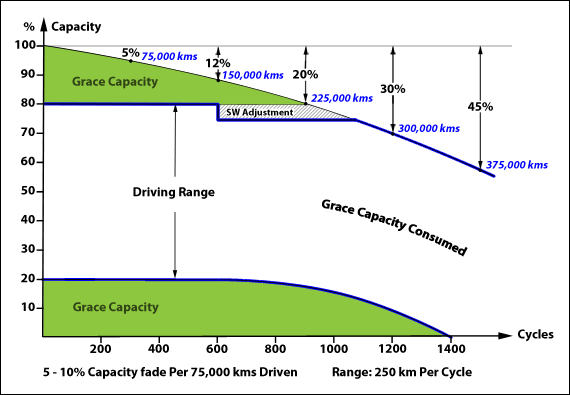Welcome to a world where sustainability reigns supreme, with commendable contenders like the Chevrolet Bolt EV leading the charge—quite literally. It’s crucial, though, to go beyond the gloss of marketing jargon. Here, we dive into the heart of this electric marvel, examining its battery longevity and maintenance factors. Strap in for an enlightening journey that puts efficiency, longevity, and practicality in the spotlight as we navigate the electrifying landscape of the Bolt EV’s battery system.
Table of Contents
About Chevrolet Bolt EV

Chevrolet has outdone itself with the introduction of the Chevy Bolt EV, a fully electric vehicle that scores high on practicality and performance. An eco-friendly marvel, this compact SUV is not only a testament to the brand’s committed strides down electric avenue but also its capability to produce a vehicle that retains Chevrolet’s signature style and sturdiness.
The Chevy Bolt EV was first introduced to the world in 2017, and has since, continued to wow the electric vehicle market. It impresses with a range of over 259 miles in a single charge, debunking those range-anxiety myths that circle around electric vehicles. Noteworthy is that this bountiful mileage comes off a battery pack of 66 kWh, which brings to focus its energy-efficient performance.
What sets Chevrolet Bolt EV apart in today’s exponentially growing electric vehicle market is its simplicity mated with high functionality– it gives you the ease of a commuter car while scoring high on the green living aspect. Moreover, the engaging driving experience that is characteristic of electric vehicles is pleasantly there – torque-on-demand acceleration, one-pedal driving, and apt handling are quite the welcome features on everyday drives.
The Bolt’s design aesthetics are a blend of approachability and modern sophistication. Its spacious cabin that conceals the underlying cutting-edge technology underlines family-friendly functionality. All these, coupled with an affordable price tag, are designed to make electric driving accessible and practical to a larger demographic of drivers.
Under the hood, the Bolt houses an Electric Drive Unit that delivers an impressive horsepower of up to 200hp. Notably, it’s the regenerative braking feature, that helps in extending the driving range by converting the vehicle’s momentum back into electricity, making the Bolt EV both an economical and eco-friendly driving choice. Another interesting aspect is the car’s capability to charge at multiple locations, including at home which allows for overnight charging, amplifying the car’s day-to-day usability.
In sum, whether you view it as a calculated investment for long-term savings, or as a commitment to cleaner living, the Chevrolet Bolt EV stands out as a robust example of a capable electric vehicle that doesn’t compromise on range, prowess, or comfort. This is solid proof that the Bolt EV is not just an experiment in EV engineering, but a sign of things to come in mainstream motoring. It’s an electric vehicle that’s meant for the here, now, and beyond.
Understanding the Battery and its Lifespan

Under the hood of the Chevrolet Bolt EV, you’ll find a lithium-ion battery pack. Lithium-ion, a type of rechargeable battery, essentially breathes life into electric vehicles (EV). As the heart of the Bolt EV, understanding the battery and its lifespan is crucial.
A noteworthy feature is the battery’s capacity, traditionally measured in kilowatt-hours (kWh). Higher kWh generally signifies more range. The Bolt EV boasts a whopping 66 kWh capacity which – in translation – equals approximately 259 miles of range on a full charge. That’s akin to having your cake and eating it too, with ample mileage to help you contend with range anxiety.
The common thinking that inevitably floats around: the more frequently you charge, the more you diminish the longevity of the battery. But hey, fear not! While it’s true that batteries start to decay from the moment they’re made, the life of the Bolt EV’s battery extends well beyond a decade. General Motors, the manufacturer, fortifies this assurance with an 8-year/100,000-mile warranty on the battery. This indicates the level of confidence the automaker has in its battery longevity.
Lithium-ion battery packs, like those in a Bolt EV, don’t behave quite like your traditional gasoline engine either. They don’t mind being kept “full” and in fact, thrive under regular charging rather than deep drain and refill routines. By charging the Bolt EV frequently, you’re not hampering its longevity, but encouraging it.
However, consistent exposure to extreme weather conditions could pose a threat. High temperatures can accelerate battery degradation as they increase discharge rates, while cold could cause the range to decrease, forgivingly only temporarily.
While every battery has an expiry date, it doesn’t mean the Bolt EV is ready for the junkyard once the battery pack gives up the ghost. Rather, Chevrolet and other automakers are working on solutions for second-life applications of EV batteries, such as repurposing into grid storage systems.
Remember, the Bolt EV’s battery is like a well-aged bourbon – it might get better over time. The critical aspect is to give it the proper TLC. You may not have control over every factor impacting the battery’s lifespan, but understanding how it works might just be the ticket to squeeze out those additional miles.
Maintenance Practices for the Chevrolet Bolt EV

As you slide into the world of electric vehicle ownership and specifically spinner into Chevy Bolt territory, you’ll find maintenance takes a different gear compared to traditional internal combustion engine vehicles.
To begin with, the Bolt EV significantly reduces the number of parts that need regular servicing. No spark plugs, oil changes, timing belts, or exhaust system modifications here; the to-do list is much shorter. Yet, even with fewer components to worry about, there are some key maintenance items specific to the Bolt EV that you’ll want to pay attention to.
Regular inspection and maintenance of the cooling system is a primary concern. The Bolt houses a complex and critical liquid cooling and heating system that keeps the battery at its optimal working temperature. This system needs to be kept clean, properly filled, and free of leaks to ensure it runs smoothly.
While the Bolt EV doesn’t need classic oil changes, it does require gear lubricant changes. Although fewer and farther in-between than traditional oil changes, it’s important not to overlook this aspect of upkeep. Additionally, maintaining your brake system is still just as crucial as in any other car, even though EVs inherently experience reduced brake wear due to regenerative braking.
One of the most significant maintenance aspects unique to the Bolt EV is battery care. To ensure maximum battery life and performance, Chevy recommends plugging the Bolt EV into a power source whenever it’s not being used – even overnight. Especially in extreme temperatures, frequent charging ensures the battery conditioning system can operate effectively, enhancing the battery life. On the subject of temperature, Bolt EV owners should preferably park in a cool, dry spot, as high temperatures can deuce the life cycle of a Lithium-ion battery.
Tire maintenance remains an essential factor in any vehicle, and the Bolt EV is no exception. Regular tire rotations, balancing, and alignment checks and maintaining correct tire pressures are all necessary to not only ensure a smooth, efficient ride, but also to maximize the range of your battery.
While this might sound like a handful, keep in mind that the overall maintenance schedule for the Bolt EV is decidedly less demanding than most internal combustion engine vehicles. In the long run, the lower costs associated with Bolt EV maintenance can contribute significantly towards offsetting the initial purchase price, making it not just an environmentally friendly choice, but also a financially savvy one. So, you can refocus your energy on enjoying the tremendous torque under your foot instead of fretting over your next trip to the service garage.
Battery Performance and Optimizing Techniques

Delving into the heart of matters, let’s dig into the battery performance and practical tips to maximize it. Anything rolling into Chevy dealerships sporting an “EV” appended to its moniker houses a hefty 66-kWh battery pack. This robust supply of juice is what helps the Bolt confidently claim its impressive EPA-rated range of up to 259 miles. The Bolt, thus, easily positions itself as a strong contender in the EV field, equipped to battle range-anxiety concerns head-on.
However, owning an electric vehicle isn’t just a simple “plug-and-play” situation. What you’re looking at is some serious ‘battery etiquette’ to ensure it retains as much of its youthful vim and vigor as possible.
First on the list is moderate charging. While Bolt EV’s battery is engineered to handle full charging cycles, practicing balance is key. Charging up to 80% for everyday use and only opting for a 100% charge for long journeys can significantly improve the overall battery health. This is often referred to as the “Goldilocks Rule” for EV charging – not too low, not too high, just right.
Next up, be mindful of rapid charging. Yes, Bolt’s DC Fast Charging capabilities are impressive – it offers around 100 miles of range in just 30 minutes. Seductive as it may sound, repeated fast charging can impact the battery’s performance over time. It’s excellent for long trips when you absolutely need it, but it’s better to rely on your trusty Level 2 home charger for daily refills.
The Bolt also boasts some energy-saving features that can be quite crafty in optimizing efficiency. One feature is “One Pedal Driving,” which essentially captures energy during deceleration and feeds it back into the battery system. Utilizing this feature will not only elevate your driving experience but also extend the hefty leg your Bolt can stand on.
Another noteworthy feature is the ‘Hilltop Reserve’. Living on a hill might have its challenges but charging doesn’t have to be one. This retired feature, available on models until 2018, stops charging at 90%, thereby safeguarding against possible deterioration caused by fully charging your Bolt and then leaving it idle.
Lastly, remember that your Bolt’s battery, like any of us, isn’t a fan of extreme temperature conditions. Too cold and it might not muster the strength to deliver range; too hot and it could deteriorate more quickly. So consider the effects of outside temperature and how you might mitigate these through parking in the shade or a garage, if available.
So there you have it. With a bit of vigilance and polite manners, your Bolt’s battery can deliver consistent performance and resilience, thus ensuring you get the most out of your electrified chariot.
FAQs
How long does the battery in a Chevrolet Bolt EV last?
What maintenance is required for the battery pack?
Is the battery performance affected by temperature changes?
Conclusion
The Chevrolet Bolt EV reflects a promising stride toward environmental sustainability. It boasts impressive battery life, reducing range anxiety, while maintenance is astonishingly low-complexity due to fewer moving parts. Sure, these features make the Bolt EV an economic option in the long run. Yet, it’s more than just the numbers; it illustrates how far electric vehicles have come and hints at an electrifying future for the auto industry. Encouragingly, ethical driving and ownership experience need not be sacrificed in the name of environmental care.
